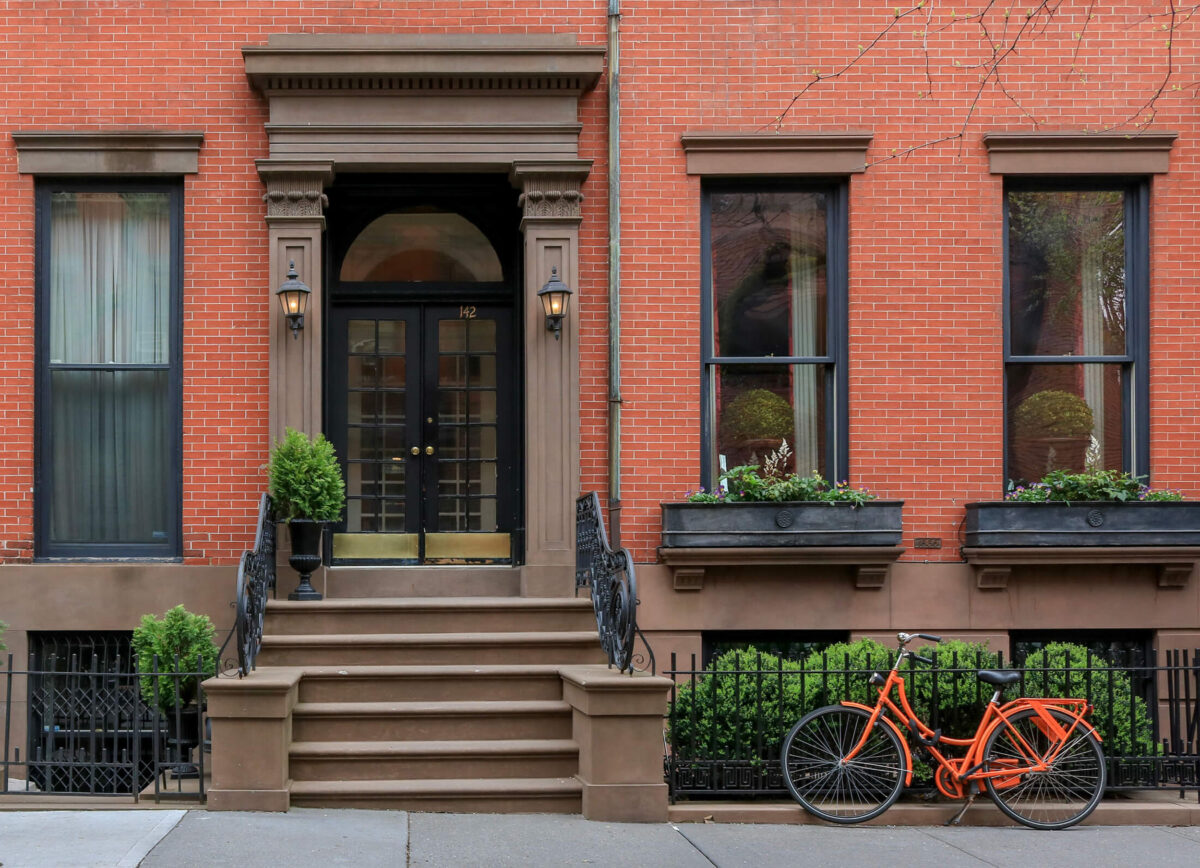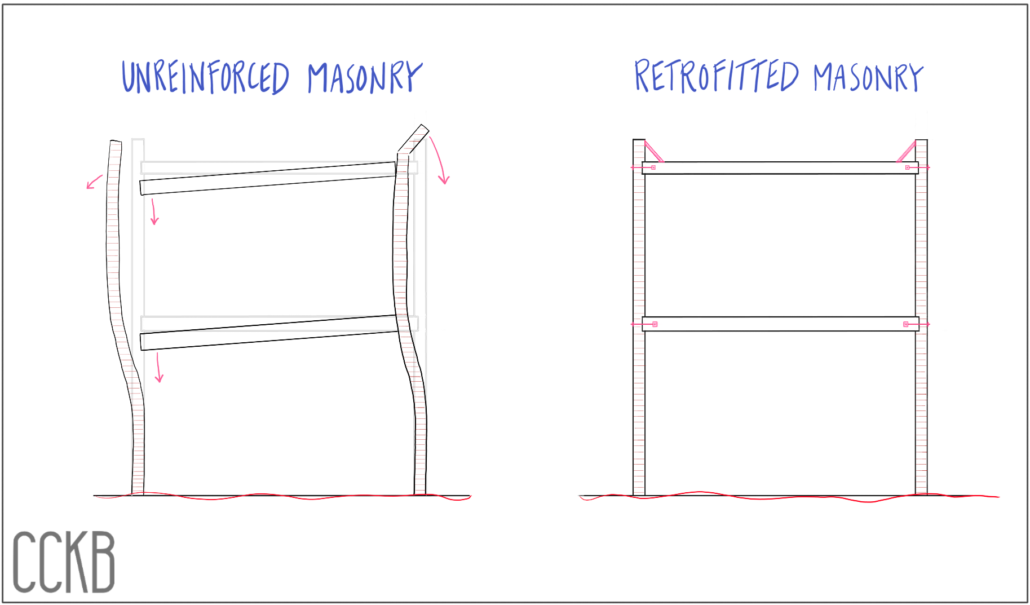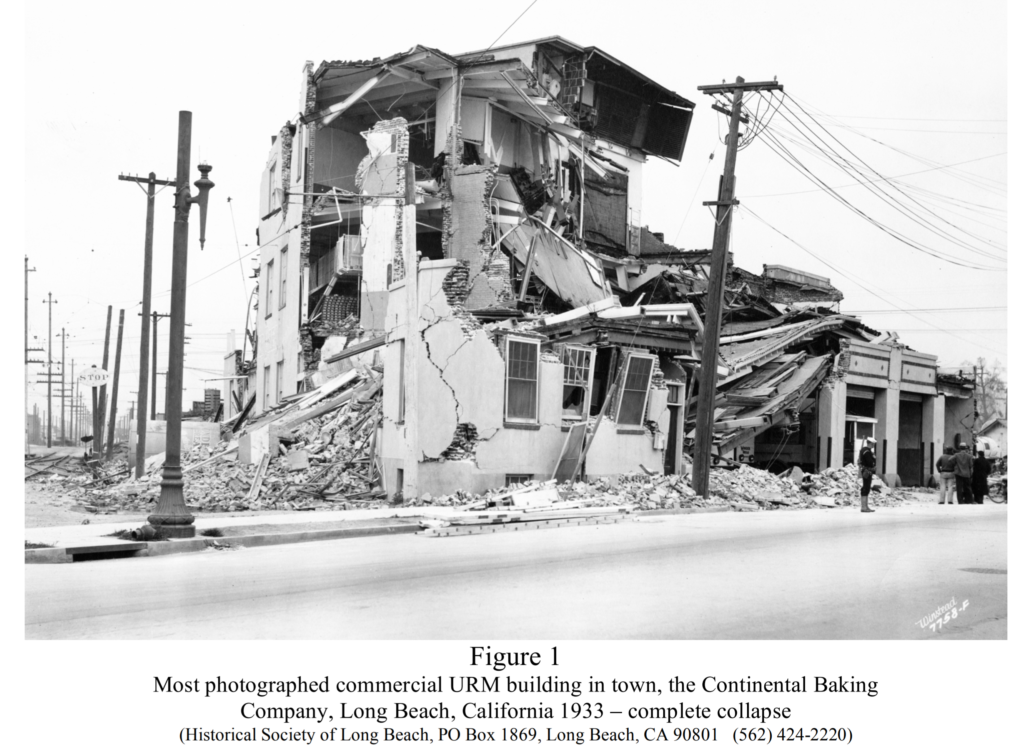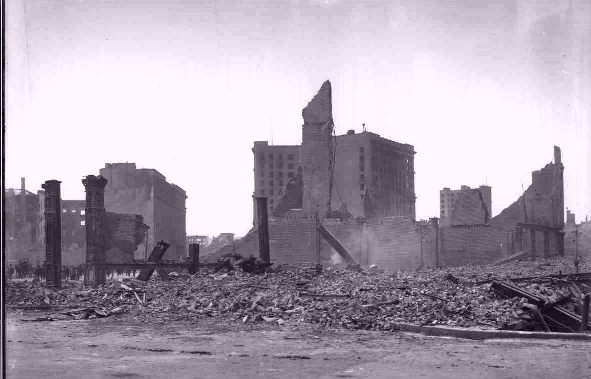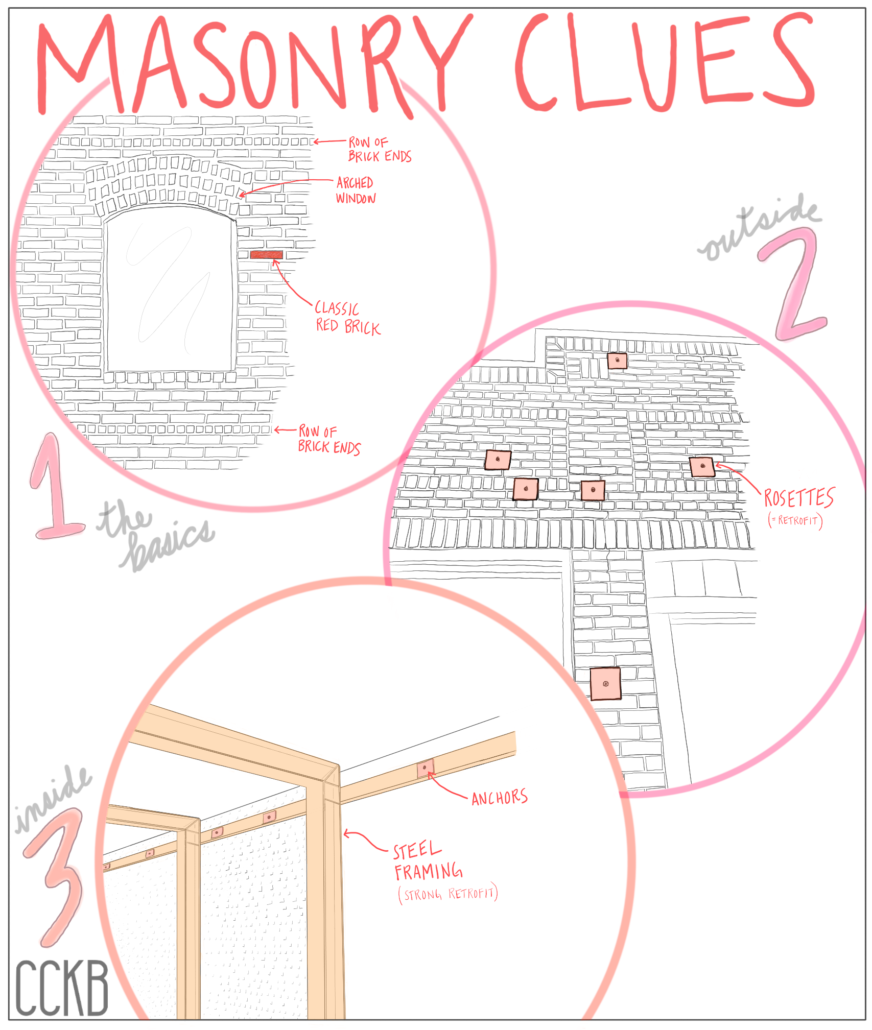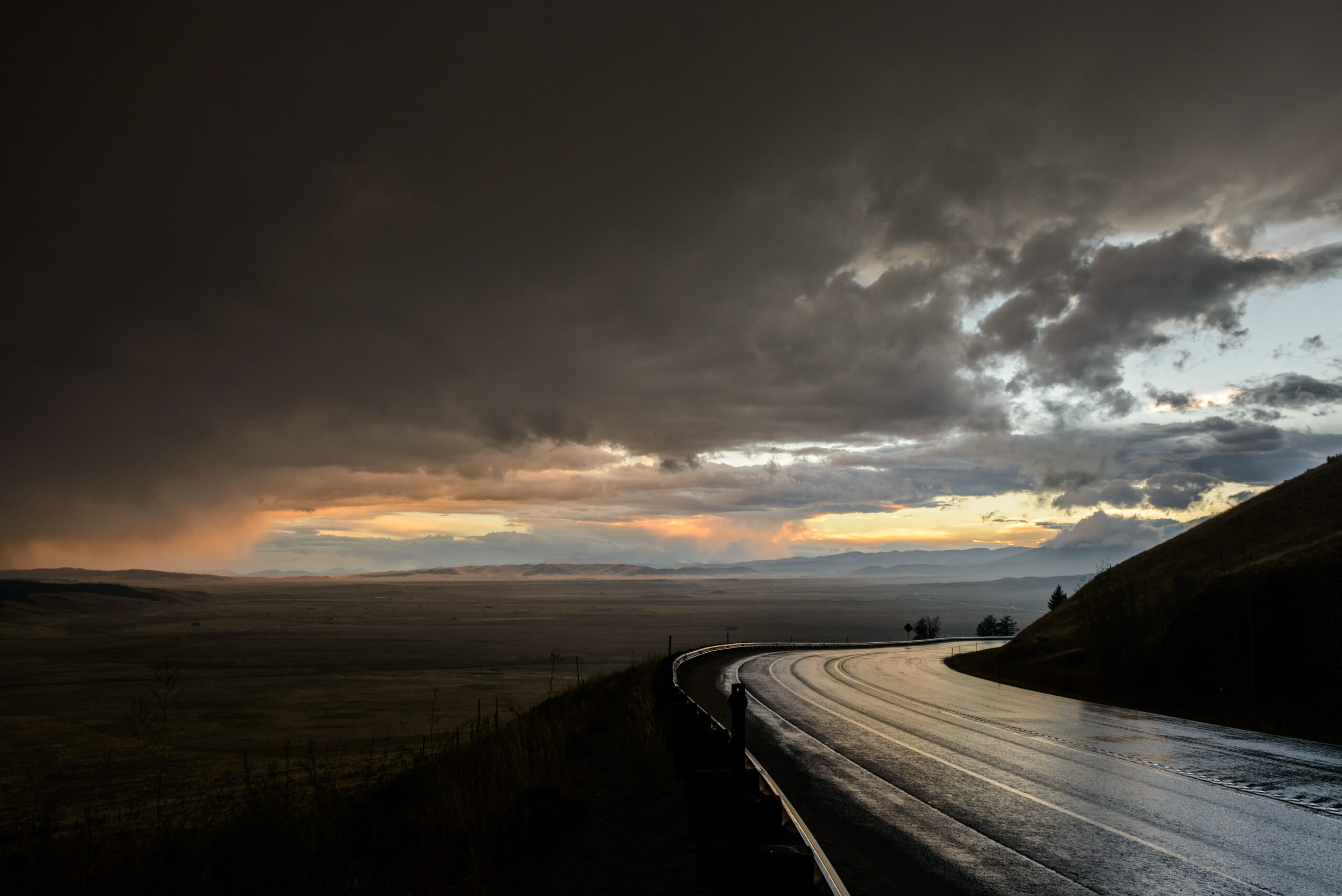Brick buildings are charming, and people are trending back to reviving historical buildings. When was the last time you saw a nice brewery in a rustic brick building? Or a white painted brick wall in a gelato place? Probably recently. Just because a business is in a brick building or a unit is up for rent in a brick building, doesn’t mean that the building is a safe place to be during an earthquake.
The Danger of Unreinforced Masonry Buildings in an Earthquake
An unreinforced masonry building is a building constructed of bricks or blocks and mortar. There’s no rebar, and there’s no steel. During an earthquake, the mortar cracks and the bricks separate. The walls peel outward, falling to the sidewalk. The floors previously held up by the brick walls then collapse. Because of these safety hazards, unreinforced masonry buildings are not allowed to be built in California.
Modern building codes require structures to be ductile in an earthquake – to be able to move and sway without breaking. Brick buildings are just the opposite – they’re brittle in an earthquake. Steel is a ductile material, so retrofits of brick buildings often use steel to reinforce the masonry and improve the structure’s earthquake ductility.
A brittle unreinforced masonry building failure versus a retrofitted masonry building:
Unreinforced masonry buildings have a long history of unsafe performance. This has been demonstrated repeatedly, during earthquakes in 1868 (Hayward), 1906 (San Francisco), 1925 (Santa Barbara), 1933 (Long Beach), 1952 (Kern County), 1971 (San Fernando), 1983 (Coalinga), 1987 (Whittier), 1989 (Loma Prieta), and 1994 (Northridge). See photographs below of the brick building wreckage after the Magnitude 6.4, 10-second long, 1933 Long Beach earthquake. The 1933 earthquake triggered changes to California’s building code to prohibit new construction of unreinforced masonry buildings.
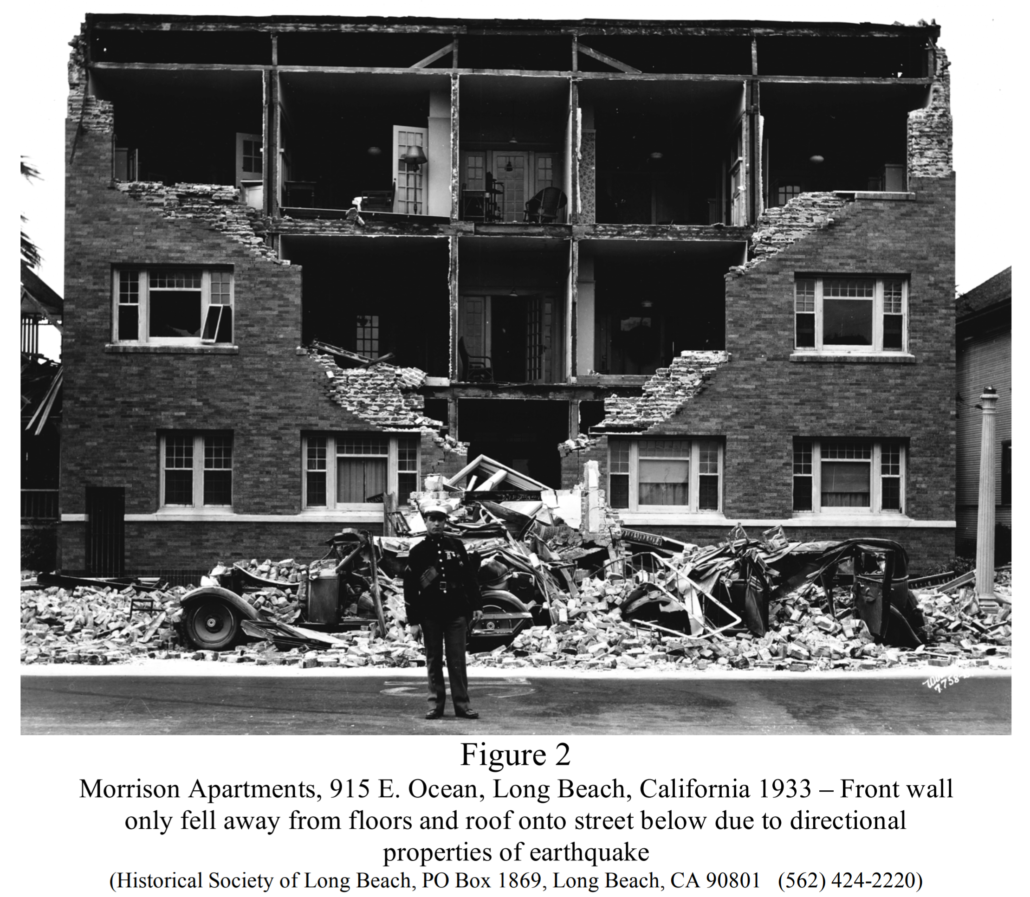
Unreinforced masonry buildings get even more damaged the longer the shaking lasts. Compare the photos above, from a 10-second earthquake, to the photos below, from the Magnitude 7.9, 60-second long, 1906 San Francisco earthquake. Whether the shaking lasts 10-seconds or 60-seconds, you do not want to be inside or right outside a brick building during an earthquake.
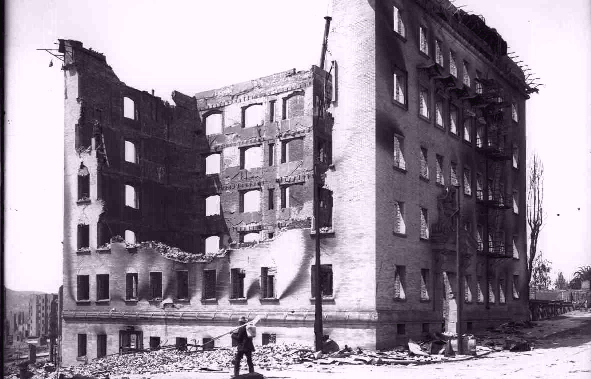
How Do I Spot An Unreinforced Masonry Building?
These clues will tell you if the building is built of brick masonry and whether it is reinforced.
- Look for red brick, arched windows, and the row of brick ends. Make sure to check the entire perimeter of the building because the front side may have a veneer (such as stucco) covering the brick.
- Look for square plates, also known as rosettes. Rosettes are a steel rod assembly that connects the floors to the walls or to internal steel bracing. Also, look for bracing that ties the top of the brick wall, the parapet, to the roof (google maps satellite view can help). If you see these retrofits, then this is a retrofitted brick building.
- Go inside the building and look for steel beams or columns. This is the best form of retrofit because the strong steel columns are now supporting the floors rather than bricks alone or bricks with tie rods.
If you see bricks but no steel, there’s a good chance it’s an unreinforced masonry building. In some cases, the brick or retrofits may not be in view, so you should ask the owner of the building: when was the building constructed and have there been structural retrofits?
Is a Retrofitted Brick Building Safe?
Is retrofitting enough? Usually. The United States Geological Survey and the California Geological Society tell us that retrofits were able to withstand the 7-second duration shaking during the 1989 Loma Prieta and 1994 Northridge earthquakes. The retrofits saved many lives. But, they wouldn’t in a record-setting earthquake like the 60-second long, 1906 San Francisco earthquake. Long-duration shaking will cause collapse of brick buildings, even many which are retrofitted. When deciding where to live and work, newer, ductile buildings will simply be safer during an earthquake.
Part 1 in this series addresses if you live in an unretrofitted brick building.
